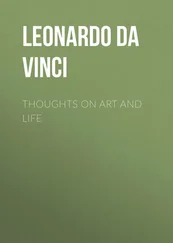Leonardo da Vinci - The Notebooks of Leonardo Da Vinci. Complete
Здесь есть возможность читать онлайн «Leonardo da Vinci - The Notebooks of Leonardo Da Vinci. Complete» — ознакомительный отрывок электронной книги совершенно бесплатно, а после прочтения отрывка купить полную версию. В некоторых случаях можно слушать аудио, скачать через торрент в формате fb2 и присутствует краткое содержание. Жанр: foreign_prose, foreign_home, visual_arts, foreign_antique, на английском языке. Описание произведения, (предисловие) а так же отзывы посетителей доступны на портале библиотеки ЛибКат.
- Название:The Notebooks of Leonardo Da Vinci. Complete
- Автор:
- Жанр:
- Год:неизвестен
- ISBN:нет данных
- Рейтинг книги:3 / 5. Голосов: 1
-
Избранное:Добавить в избранное
- Отзывы:
-
Ваша оценка:
- 60
- 1
- 2
- 3
- 4
- 5
The Notebooks of Leonardo Da Vinci. Complete: краткое содержание, описание и аннотация
Предлагаем к чтению аннотацию, описание, краткое содержание или предисловие (зависит от того, что написал сам автор книги «The Notebooks of Leonardo Da Vinci. Complete»). Если вы не нашли необходимую информацию о книге — напишите в комментариях, мы постараемся отыскать её.
The Notebooks of Leonardo Da Vinci. Complete — читать онлайн ознакомительный отрывок
Ниже представлен текст книги, разбитый по страницам. Система сохранения места последней прочитанной страницы, позволяет с удобством читать онлайн бесплатно книгу «The Notebooks of Leonardo Da Vinci. Complete», без необходимости каждый раз заново искать на чём Вы остановились. Поставьте закладку, и сможете в любой момент перейти на страницу, на которой закончили чтение.
Интервал:
Закладка:
101
Begin from the line m f with the eye below; then go up and do the same with the line n f , then with the eye above and close to the 2 gauges on the ground look at m n ; then as c m is to m n so will n m be to n s .
If a n goes 3 times into f b, m p will do the same into p g . Then go backwards so far as that c d goes twice into a n and p g will be equal to g h . And m p will go into h p as often as d c into o p .
[Footnote: The first three lines are unfortunately very obscure.]
102
I GIVE THE DEGREES OF THE OBJECTS SEEN BY THE EYE AS THE MUSICIAN DOES THE NOTES HEARD BY THE EAR.
Although the objects seen by the eye do, in fact, touch each other as they recede, I will nevertheless found my rule on spaces of 20 braccia each; as a musician does with notes, which, though they can be carried on one into the next, he divides into degrees from note to note calling them 1st, 2nd, 3rd, 4th, 5th; and has affixed a name to each degree in raising or lowering the voice.
103
PERSPECTIVE.
Let f be the level and distance of the eye; and a the vertical plane, as high as a man; let e be a man, then I say that on the plane this will be the distance from the plane to the 2nd man.
104
The differences in the diminution of objects of equal size in consequence of their various remoteness from the eye will bear among themselves the same proportions as those of the spaces between the eye and the different objects.
Find out how much a man diminishes at a certain distance and what its length is; and then at twice that distance and at 3 times, and so make your general rule.
105
The eye cannot judge where an object high up ought to descend.
106
PERSPECTIVE.
If two similar and equal objects are placed one beyond the other at a given distance the difference in their size will appear greater in proportion as they are nearer to the eye that sees them. And conversely there will seem to be less difference in their size in proportion as they are remote from the eve.
This is proved by the proportions of their distances among themselves; for, if the first of these two objects were as far from the eye, as the 2nd from the first this would be called the second proportion: since, if the first is at 1 braccia from the eye and the 2nd at two braccia, two being twice as much as one, the first object will look twice as large as the second. But if you place the first at a hundred braccia from you and the second at a hundred and one, you will find that the first is only so much larger than the second as 100 is less than 101; and the converse is equally true. And again, the same thing is proved by the 4th of this book which shows that among objects that are equal, there is the same proportion in the diminution of the size as in the increase in the distance from the eye of the spectator.
On natural perspective (107—109).
107
OF EQUAL OBJECTS THE MOST REMOTE LOOK THE SMALLEST.
The practice of perspective may be divided into … parts [Footnote 4: in … parte . The space for the number is left blank in the original.], of which the first treats of objects seen by the eye at any distance; and it shows all these objects just as the eye sees them diminished, without obliging a man to stand in one place rather than another so long as the plane does not produce a second foreshortening.
But the second practice is a combination of perspective derived partly from art and partly from nature and the work done by its rules is in every portion of it, influenced by natural perspective and artificial perspective. By natural perspective I mean that the plane on which this perspective is represented is a flat surface, and this plane, although it is parallel both in length and height, is forced to diminish in its remoter parts more than in its nearer ones. And this is proved by the first of what has been said above, and its diminution is natural. But artificial perspective, that is that which is devised by art, does the contrary; for objects equal in size increase on the plane where it is foreshortened in proportion as the eye is more natural and nearer to the plane, and as the part of the plane on which it is figured is farther from the eye.
And let this plane be d e on which are seen 3 equal circles which are beyond this plane d e , that is the circles a b c . Now you see that the eye h sees on the vertical plane the sections of the images, largest of those that are farthest and smallest of the nearest.
108
Here follows what is wanting in the margin at the foot on the other side of this page.
Natural perspective acts in a contrary way; for, at greater distances the object seen appears smaller, and at a smaller distance the object appears larger. But this said invention requires the spectator to stand with his eye at a small hole and then, at that small hole, it will be very plain. But since many (men's) eyes endeavour at the same time to see one and the same picture produced by this artifice only one can see clearly the effect of this perspective and all the others will see confusion. It is well therefore to avoid such complex perspective and hold to simple perspective which does not regard planes as foreshortened, but as much as possible in their proper form. This simple perspective, in which the plane intersects the pyramids by which the images are conveyed to the eye at an equal distance from the eye is our constant experience, from the curved form of the pupil of the eye on which the pyramids are intersected at an equal distance from the visual virtue.
[Footnote 24: la prima di sopra i. e. the first of the three diagrams which, in the original MS., are placed in the margin at the beginning of this chapter.]
109
OF A MIXTURE OF NATURAL AND ARTIFICIAL PERSPECTIVE.
This diagram distinguishes natural from artificial perspective. But before proceeding any farther I will define what is natural and what is artificial perspective. Natural perspective says that the more remote of a series of objects of equal size will look the smaller, and conversely, the nearer will look the larger and the apparent size will diminish in proportion to the distance. But in artificial perspective when objects of unequal size are placed at various distances, the smallest is nearer to the eye than the largest and the greatest distance looks as though it were the least of all; and the cause of this is the plane on which the objects are represented; and which is at unequal distances from the eye throughout its length. And this diminution of the plane is natural, but the perspective shown upon it is artificial since it nowhere agrees with the true diminution of the said plane. Whence it follows, that when the eye is somewhat removed from the [station point of the] perspective that it has been gazing at, all the objects represented look monstrous, and this does not occur in natural perspective, which has been defined above. Let us say then, that the square a b c d figured above is foreshortened being seen by the eye situated in the centre of the side which is in front. But a mixture of artificial and natural perspective will be seen in this tetragon called el main [Footnote 20: el main is quite legibly written in the original; the meaning and derivation of the word are equally doubtful.], that is to say e f g h which must appear to the eye of the spectator to be equal to a b c d so long as the eye remains in its first position between c and d . And this will be seen to have a good effect, because the natural perspective of the plane will conceal the defects which would [otherwise] seem monstrous.
Читать дальшеИнтервал:
Закладка:
Похожие книги на «The Notebooks of Leonardo Da Vinci. Complete»
Представляем Вашему вниманию похожие книги на «The Notebooks of Leonardo Da Vinci. Complete» списком для выбора. Мы отобрали схожую по названию и смыслу литературу в надежде предоставить читателям больше вариантов отыскать новые, интересные, ещё непрочитанные произведения.
Обсуждение, отзывы о книге «The Notebooks of Leonardo Da Vinci. Complete» и просто собственные мнения читателей. Оставьте ваши комментарии, напишите, что Вы думаете о произведении, его смысле или главных героях. Укажите что конкретно понравилось, а что нет, и почему Вы так считаете.












